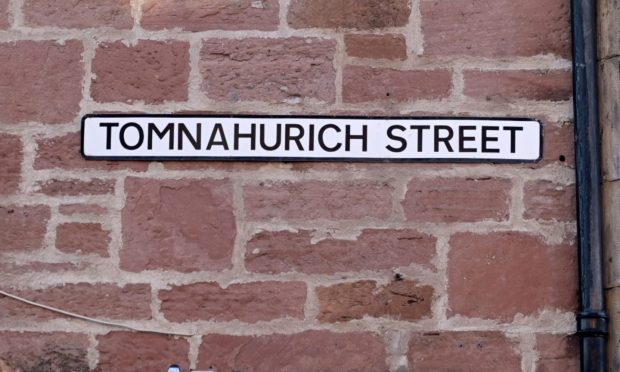Which part of Inverness once hosted horse racing? Why was one road called Doomisdale? And where was the best place to warn neighbours of approaching danger?
We’ve taken a look and answered these questions and more, in a quest to unlock the mystery of Inverness street names.
Some are straightforward and simply celebrate people, for instance Columba Road (after St Columba), Charles St (MP Charles Fraser Mackintosh) and Inglis Street (a former provost).
Is it The Raining Stairs or Raining’s Stairs?
The latter. Another ‘name’ thoroughfare is the one leading from Castle Street to the Crown and named after John Raining, an 18th century merchant from Norwich.
He donated the then huge sum of £1,200 to help support charity schools in the Highlands.
Raining’s Stairs was recently transformed with the building of a new housing development.
Baron Taylors Street started as a joke and has nothing to do with a tailor or even a real baron.
John Taylor, a writer, wanted to buy enough property around what was then called the Black Vennel to call himself a baron which was allowed under Scots law.
The locals began referring to Baron Taylor’s Street and the name stuck.
Other places like Denny Street, Deveron Street and Douglas Row, were rather unimaginatively named after the builder.
And in the case of May Court, after the builder’s wife.
How do we know all this?
The origins of the names were researched by Margaret MacDougall, the Inverness Burgh and County librarian and curator of Inverness Museum in the 1950s.
Her book, which is held in the Highland Archive Centre, looks at the simple and not so simple stories behind the names.
Taking a route one approach were those who named Pumpgate Street, the site of the old public water tap before water was put into houses.
Similarly, no one stayed up all night to come up with Tap Lane nearby.
But a few have more of a back story, often deriving from Gaelic descriptions of long-forgotten landmarks or historic events.
Tomnahurich Street – Named after the nearby hill (and now cemetery). Often referred to as the ‘hill of the fairies’, but Margaret MacDougall explains “it means nothing of the kind”.
“If it were so, the name would be Tomnashith”, she says.
Actually it means ‘hills of the yew trees’ when it was thickly wooded.
Castle St – The old name for Castle St was Doomisdale as it was the roadway that led to the gallows hill.
India St – Many men in this area were seamen and names are thought to have been given by those returning from overseas service. See also Jamaica Street and Madras Street.
Waterloo Place – Originally called Veterans Row because of the number of Napoleonic War veterans who lived there. Renamed after the battle in which so many of the local men had taken part.
Other Gaelic influences on street names
Bught – Its old name was Cill Bheathain (Kilvean). This is where St Bhean, nephew of St Columba, had his kill, or cell (church).
The name was later changed to the lowland Bught, meaning sheep pen.
Clachnaharry and Ballifeary– Many centuries ago the council employed lookouts to guard the approaches of the town at these two points to warn of clan attacks.
In Gaelic Clachnaharry is ‘stone of the watch’ and Ballifeary ‘town of the watch’.
Dalneigh – From Gaelic Dal-an-eich – ‘field of the horses’. At one time horse racing was held on a course at nearby Tomnahurich before the canal was built.
Kinmylies – A collegiate church school in pre reformation days in what is now the garden of Kinmylies House and also a burial ground. Galei Ceann a mhile – the mile end – was the road to the west passed through Kinmylies.
Diriebught – A corruption from Gaelic Tir nam Bochd – land of the poor.
For more Inverness news and updates visit our dedicated page and join our local Facebook group.





Conversation